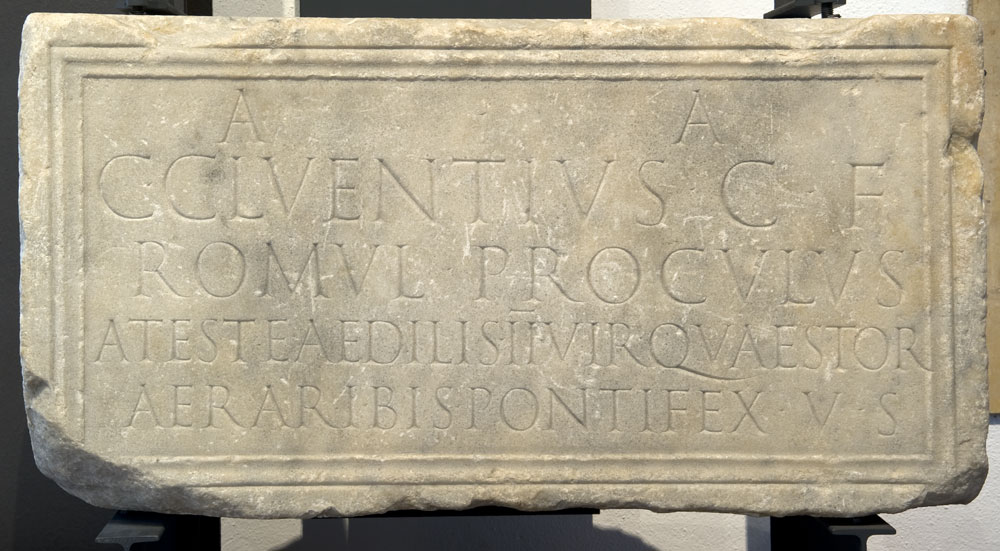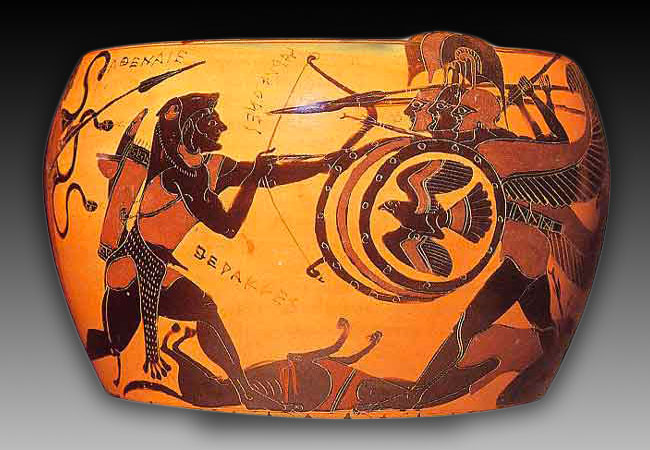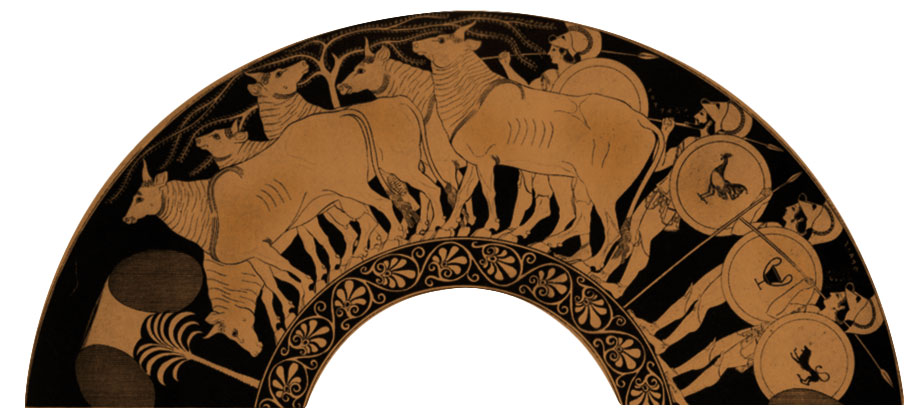The History
Discover the origin of the ‘Aquae Patavinae’ and the history of the Euganean thermal area...
|
La documentazione scritta
Lo studio della religione romana tramite la documentazione scritta
 Di tale religiosità possediamo dati desumibili dalla documentazione scritta (letteraria ed epigrafica) e da quella archeologica, quest’ultima costituita prevalentemente da manufatti sporadici, che pure offrono elementi interessanti per comprendere la complessità di questo “sistema” simbolico antico. Utili spunti vengono infine dalle tradizioni post-antiche sedimentate in queste località. Di tale religiosità possediamo dati desumibili dalla documentazione scritta (letteraria ed epigrafica) e da quella archeologica, quest’ultima costituita prevalentemente da manufatti sporadici, che pure offrono elementi interessanti per comprendere la complessità di questo “sistema” simbolico antico. Utili spunti vengono infine dalle tradizioni post-antiche sedimentate in queste località.
Da un punto di vista cultuale, in questi luoghi sono attestate alcune divinità dalle evidenti caratteristiche sananti: spiccano Gerione, noto in area euganea per le sue capacità oracolari, Apono, divinità il cui nome potrebbe rinviare a una fonte sacralizzata, e Apollo, che con la romanizzazione sembra affiancarsi o sostituire Aponus.
Sono documentati infine oggetti votivi e/o iscrizioni riferiti a Giove, a Mercurio, a Iside, a Vulcano e forse a Fortuna, tutte divinità che documentano, come in altri siti termali italici, la molteplicità e la complessità delle forme di venerazione in questo particolare contesto termominerale.
Infine, da un punto di vista mitologico le fonti letterarie ricordano il passaggio in questi territori di Eracle durante il suo ritorno dalle terre nell’estremo Occidente, e secondo alcuni studi è ancora qui, in un luogo caratterizzato da un odore forte e persistente, che cadde Fetonte nella sua corsa sul carro del Sole.
The studies recognize in Aponus the name of a source with therapeutic properties…Recent studies that analyzed these two gods (Aponus and Apollo) according to the literary sources are unanimous in recognizing in "Aponus" the name of a source sacralized for its therapeutic properties, already existingin the Iron Age and also attested in Roman times.
Furthermore, the root "Ap*" derives from the semantic sphere of water and therefore it is not surprising that Apollo appears alongside (or replaces) Aponus at the "aquae Patavinae”with the Romanization: the presence of the god of medicine, able to give oracles and to heal the sick through the properties of water, was documented in many other Italic thermal sites, and this is also proven here by a small altar with a votive dedication from Montirone and a bas-relief (now lost) discovered on the hill of San PietroMontagnon.
Certainly, though, "Aponus" was the best known tutelary deity of the hot and therapeutic springs, since various inscriptions found between Montegrotto, Abano and Saccolongo are devoted to him: the initials A. A. present on such inscriptions seems to refer to a dedication to the waters of "Aponus" (in the formula of "AquaeAponis" or "AquaeAponiae").

Lastra in marmo di Luni con dedica alle ‘Aquae Aponi’
|
The presence Geryon, depicted in Greek mythology as a three-headed monster…In Greek mythology Geryon was represented as a three-headed monster. His presence at the "aquaePatavinae" is attested by Suetonius, who attributes to this god an oracular type of cult: according to the writer, Tiberius questioned him about his future and the god advised him to throw a dice into the source of "Aponus" to draw the auspices. This gesture revealed to Tiberius the arrival of great successes.
To date there are no known material traces of this ancient oracular seat, although it had to exist in antiquity. Another clue, however, is provided by an inscription dedicated to the oracle of Geryon that was seen in the chancel of the old parish church of SS. Pietro and Eliseo in San PietroMontagnon.
It is not even possible to demonstrate that the seventeen bronze "sortes" recovered in the sixteenth century in an unidentified place between Este and Padua and now largely lost were related to this oracle. However there is a monument fragment, which may be a cultual pillar, discovered during an excavation of the nineteenth century in the countryside of Este, that could represent a three-headed Geryon.
The existence of such a god, linked to the figure of Hercules, is well placed in this area as it is connected to the "infernal" world from which the hot springs arose, today still very impressive for the characteristic smoke. The Paduan Geryon, initially identified with an indigenous deity and only later assimilated to the Greek demon, had not at all the negative connotations of the classical mythological saga and was interpreted in a positive sense for his oracular and salutary abilities, beneficial for men as much as for animals.

Anfora con Gerione in attacco (da LIMC IV, 2, s.v. Geryoneus, 16)
|
Thanks to the written sources we learn that Heracles left the mark of his passage in these land…Heracles’ presence in the Euganean thermal area is documented by some Latin sources: according to the testimony of Claudian, which stayed there between 397 and 399 AD, Heracles left its mark in these places during his return from the land of the far West with the herds stolen from Geryon (FIG. 3). The so-called "road of Heracles” would be a tangible memory of such transit. It was a road characterized by deep furrows, still visible at Abano-Montegrotto at the time of the poet in late antiquity.
Finally, according to Pherecydes (5th century BC), the hero consulted the nymphs of the Eridanus-Po (the Heliades?) during his pilgrimage in search of the apples of the Hesperides.

Coppa attica attribuita a Eufronio. Lato A: Eracle combatte contro Gerione; lato B: i buoi di Gerione (da LIMC V, 2, s.v. Heracles, 2501).
|
It is said that Phaeton fell from the chariot of the Sun near a lake of hot water…The area between the riverEridanus and the waters of Aponusis the context in which a tradition linked to the myth of Phaeton is set: according to a text falsely attributed to Aristotle, the populations settled in the vicinity of Eridanussaid that Phaeton fell by the solar chariot in a place dominated by a lake of hot water with an unpleasant smell that prevented any animal to drink or fly over it. The Heliades, desperate for the death of their brother, were transformed into poplars, and their tears into amber (material that actually came from northern Europe to be traded throughout the Mediterranean). The myth of theElektrides islands (which have the Greek name of amber, electro) takes placein this same mythological context, in the heart of the Venetian lagoon or near Aquileia.

La caduta di Fetonte dal carro del Sole (Galleria degli Uffizi – Firenze, sarcofago romano, inv. 181; da SICHTERMANN H., KOCH G. 1975, Griechische Mythen auf römischen Sarkophagen, Tübingen, Taf. 157, 2).
|
|




